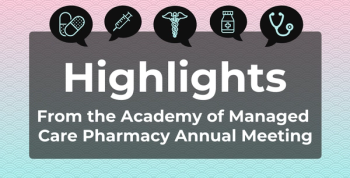
Greater Risk of Cataract Surgery Shown in Patients With Atopic Dermatitis, Allergic Diseases
Korean patients with allergic diseases, including atopic dermatitis (AD), allergic rhinitis (AR), and asthma, had a higher risk of cataract surgery, and the combination of AD and AR resulted in the highest risk.
Patients with allergic diseases are at higher risk of cataract development and subsequent surgery, according to study findings published in
Common in adults and children, allergic diseases, including
“They have a common etiology, involving type 2 immune responses secondary to genetic and allergic factors. Each condition is distinct, with its own phenotype and pathogenesis,” said the study authors.
Previous research has indicated that these atopic diseases are independently associated with an increased incidence of cataract, but researchers note that these data are conflicting and limited due to the repetitive use of systemic corticosteroids and long-term intranasal corticosteroids among the study populations.
Aiming to further investigate the association between allergic diseases and the risk of cataract, the study authors conducted a nationwide, population-based cohort study of data derived from the 2009 National Health Insurance Service-Health Screening Cohort in Korea.
The study population was restricted to only visually affected patients with cataract who underwent cataract surgery. These patients were categorized by sex and age into women and men older than 50 years and 50 years or younger.
Each allergic disease was defined as 3 or more occasions of diagnosis within 1 year with dedicated International Classification of Diseases, Tenth Revision codes. The primary end point was newly received cataract surgery during the follow-up period.
Additional subgroup analyses were performed according to the following confounding factors: age, sex, body mass index, diabetes mellitus, hypertension, dyslipidemia, smoking, chronic kidney disease (CKD), drinking, exercise, low income, sex and age, retinal vein occlusion, and glaucoma.
A total of 2,631,015 subjects were selected and observed from January 1, 2009, to December 31, 2009, of which 447,883 (17.0%), 10,631 (0.40%), 91,673 (3.5%), and 400,037 (16.7%) subjects had allergy, AD, asthma, and AR, respectively.
During the mean (SD) follow-up of 7.8 (1.7) years, newly developed cataract surgery at least in one eye was observed in 301,693 subjects (11.4%), including 69,321 (19.74/1000 person-years) and 232,372 (13.64/1000 person-years) patients in the allergic and nonallergic groups, respectively.
After adjusting for confounding factors, the allergic group exhibited a higher risk for cataract development compared with the nonallergic group (HR, 1.241; 95% CI, 1.230-1.252). Among 1, 2, or 3 allergic diseases, 3 allergic diseases showed the highest risk of cataract development (HR, 1.409; 95% CI, 1.213-1.637).
Findings from the subgroup analyses further showed that subjects with any allergy, AD, AR, and asthma had an increased risk for cataract development compared with the nonallergy cohort. Among the subjects with allergy, significant diferences were observed regarding the risk of cataract development in the subgroups, except for hypertension, CKD, and regular exercise.
For patients with AD, there were sex diferences in the age and sex subgroups. After adjusting for confounding factors, the male group older than 50 years showed higher risk (HR, 1.713; 95% CI, 1.338-2.194) compared with the female group 50 years or younger (HR, 1.193; 95% CI, 1.119-1.273). These trends were not observed in the subgroup analyses of other allergic diseases, such as any allergy, asthma, and AR.
“Because this was a nationwide study conducted in a single country with a single race, the results may not be generalizable to all populations,” concluded the study authors.
“Patients with AD and AR had the highest risk of cataract surgery among all allergic disease combinations. Adult patients with AD, especially middle-aged men, require screening for a combination of other allergic conditions and regular ophthalmologic examination for the future risk of cataract.”
Reference
Paik JS, Han K, Nam G, et al. Increased risk of cataract surgery in patients with allergic disease: a population based cohort study. Sci Rep. 2022;12(1):21258. doi:10.1038/s41598-022-25589-1
Newsletter
Stay ahead of policy, cost, and value—subscribe to AJMC for expert insights at the intersection of clinical care and health economics.







































